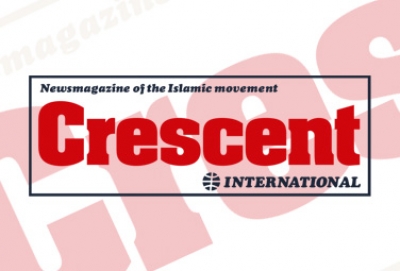



 Editor
Editor As this issue of Crescent International goes to press, some 2 million Muslims from all over the world are converging on the Haramain to perform the Hajj, the assembly of the united Ummah that is also the greatest act of personal ibadah that any Muslim can perform. The Muslims that come to perform the Hajj come from every part of the world and from all sectors of the Ummah, to stand together in the same simple clothes, resembling the shroud in which we will one day be buried, standing equal before the Creator regardless of their wealth, power and social standing, and praying for forgiveness for their past deeds and errors. At least, that is how the Hajj is supposed to be.
The reality, unfortunately, is often all too different. For one thing, there is now little opportunity for Muslims from around the world to meet and mingle as a single Ummah, as the organization of the Hajj keeps them apart and they are encouraged to arrive as late as possible and leave as quickly as possible after the Hajj. While many Muslims make huge sacrifices to come to perform the Hajj, for other it is like a luxury holiday, as they use their wealth to purchase facilities and indulgences that separate them from the bulk of the Ummah, who are all too often exploited and abused by local officials, guidesand tradesmen whose greatest honour should be to assist them. The fact that many of these hujjaj see these hardships as part of the test of the Hajj, and do not allow them to spoil what remains a remarkable spiritual journey for them, does not change the fact that the Hajj is routinely hugely mismanaged by the Saudi authorities responsible for it.
Even more serious than this is the fact that, under Saudi management, huge parts of the Hajj have been abandoned and virtually forgotten. The symbolism of the journey from Makkah to Mina and Arafat, as the march of the great army of Islam, has been largely replaced by personal religiosity. When Muslims gather stones at Muzdalifah and fling them at the shaitans at Mina, the stones represent the weapons of the Islamic armies, being wielded against the three jamarat, which represent not only Shaitan in the abstract but the shaitans in the world today. Also largely forgotten, linked to this, is the Qur’anic command that Muslims must proclaim their dissocaition from the mushrikeen at the time of Hajj (al-Qur’an 9:3). This is a command that had huge significance when it was revealed in the ninth year of the Hijrah, and is just as significant in the modern world that is dominated by the powers of kufr and their puppets in the Muslim world.
It is hardly surprising that the current Saudi regime prefers that these elements of the Hajj be forgotten. But they should know, as all Muslims should, that the Ummah awaits the day when, insha’Allah, the Hijaz is liberated and the Hajj can insha’Allah be performed properly, as it should be and as it was in the days of the Prophet, may the peace and blessing of Allah be upon him.
